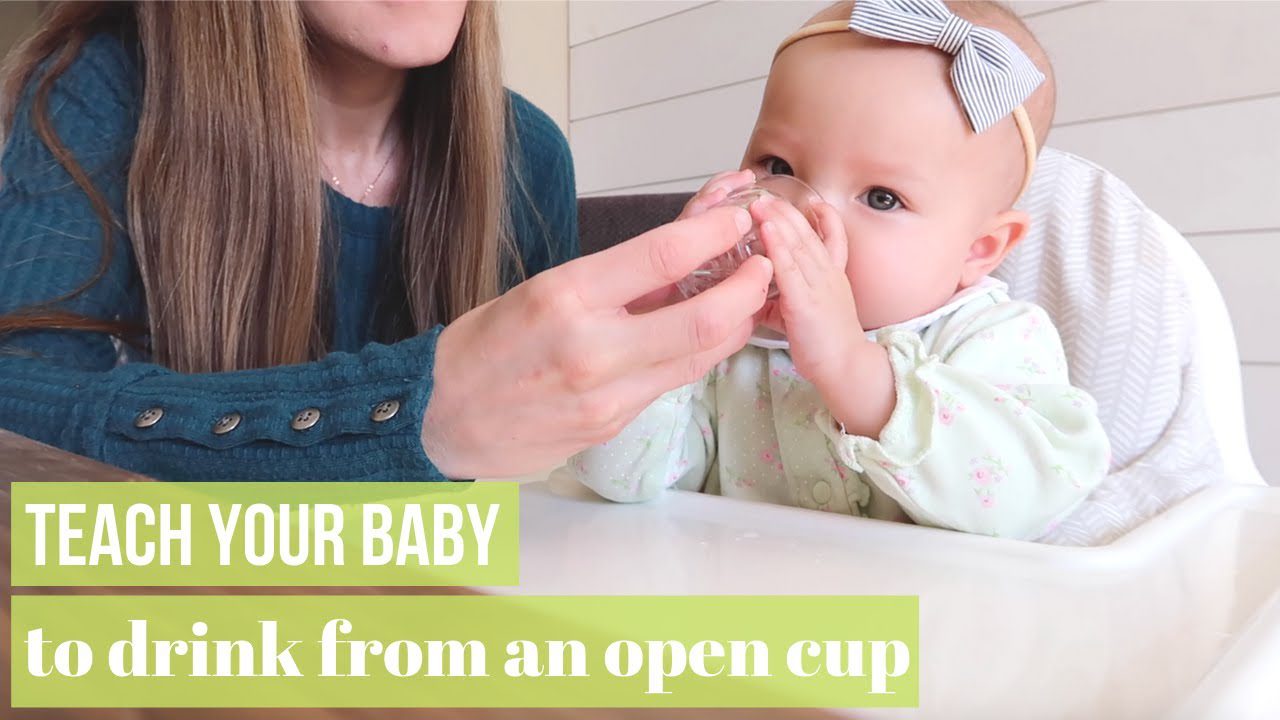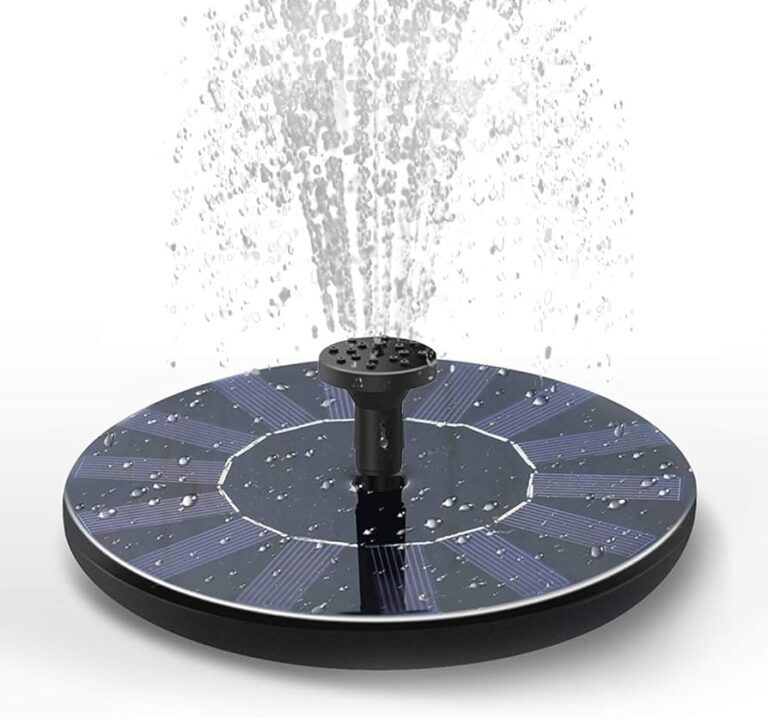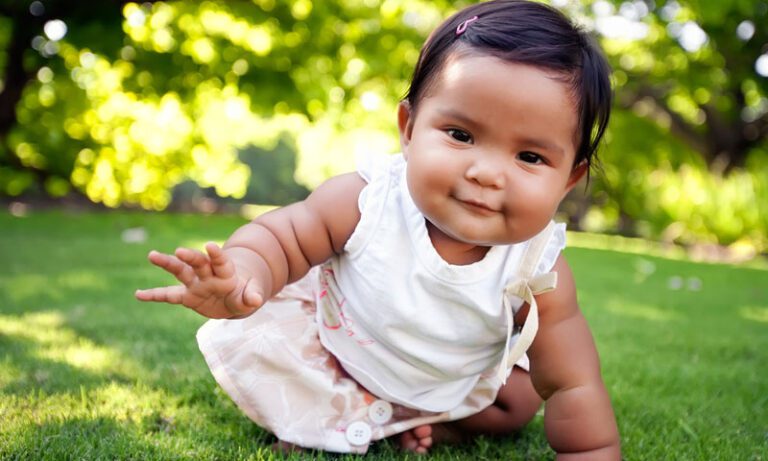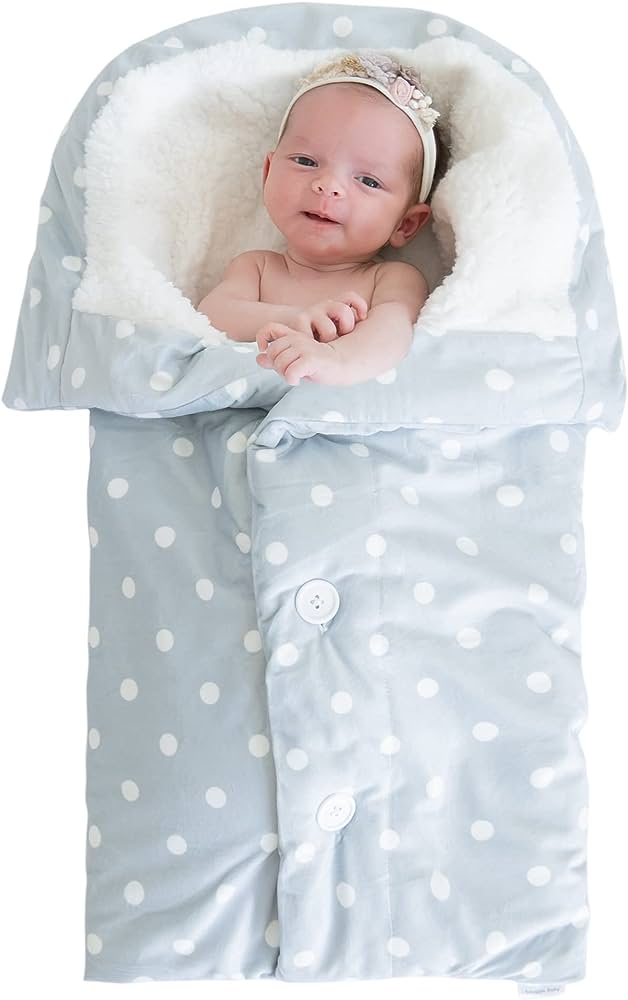How to Teach Baby to Drink from Open Cup: 7 Simple Steps
To teach a baby to drink from an open cup, start by practicing kissing the dry cup and pretending to take a sip. Provide hand-over-hand guidance while the child takes a sip and allow them to practice drinking from the cup repeatedly.
Transitioning from a bottle to an open cup can be done by introducing the cup during non-meal activities to familiarize the baby with it before using it for drinking. [Word Count: 49] Introducing a baby to drinking from an open cup is an important milestone in their development.
It promotes independence and helps them transition from bottle feeding. However, teaching a baby to drink from an open cup requires patience and practice. We will explore effective methods to teach babies to drink from open cups, such as practicing kissing the cup, hand-over-hand guidance, and introducing the cup during non-meal activities. Additionally, we will provide tips for transitioning from bottles to open cups. By following these techniques, parents can successfully teach their babies to drink from open cups and promote their overall development.
Step 1: Introduce The Open Cup In A Fun And Engaging Way
Step 1: Introduce the Open Cup in a Fun and Engaging Way. Start by practicing kissing the dry cup and role-playing taking a sip. Provide hand-over-hand guidance while your baby or toddler takes a sip, and allow them to practice drinking from the open cup repeatedly.
Allow Your Baby To Explore The Cup And Get Familiar With Its Texture And Shape.
As you begin to introduce your baby to an open cup, it’s important to give them the opportunity to explore it on their own. Place the cup in front of them during playtime or mealtime and let them get familiar with its texture and shape. Encourage them to touch and hold the cup, allowing them to feel its smooth surface or maybe even its coolness if it has been chilled. This sensory exploration will help your baby become more comfortable with the cup and spark their curiosity about what it can do.
Demonstrate How To Hold The Cup And Encourage Your Baby To Mimic Your Actions.
Next, take the cup into your own hands and show your baby how to hold it. Use simple and clear instructions, such as “Hold the cup with both hands like this” as you demonstrate the proper way to hold the cup. Encourage your baby to mimic your actions and hold the cup themselves. At this stage, they might not have the strength or dexterity to hold it as securely as you can, but practicing the motion will help them develop those skills over time.
Use Positive Reinforcement And Praise When Your Baby Shows Interest Or Makes An Attempt To Drink From The Cup.
Throughout the process of teaching your baby to drink from an open cup, it’s important to provide positive reinforcement and praise. When your baby shows interest in the cup or makes an attempt to drink from it, shower them with encouragement. Celebrate their accomplishments, even if it’s just a small sip or an intention to drink. Your positive feedback will motivate them to continue their efforts and gradually build their confidence in using an open cup.

Credit: solidstarts.com
Step 2: Start With Small Amounts Of Water Or Breast Milk
To teach your baby how to drink from an open cup, start by offering small amounts of water or breast milk. Begin by practicing with a dry cup, pretending to sip and showing interest. Provide hand-over-hand guidance and allow your baby to practice drinking from the cup repeatedly.
Begin By Offering A Small Amount Of Water Or Breast Milk In The Open Cup.
When teaching your baby to drink from an open cup, it’s important to start with small amounts of water or breast milk. This allows your baby to become familiar with the new sensation and taste. Begin by filling a small-sized cup with just a few sips of liquid. This will make it easier for your baby to handle and manipulate the cup while they learn to drink from it.
Use A Small-sized Cup That Is Easy For Your Baby To Hold And Manipulate.
Choose a cup that is specifically designed for babies and is small in size. This will make it easier for your baby to hold and manipulate. Look for a cup with handles or a wide base for added stability. It’s also important to ensure that the cup is made of baby-safe materials and is easy to clean. By providing a cup that is well-suited for your baby’s small hands, you are setting them up for success in learning to drink from an open cup.
Be Patient And Allow Your Baby To Take Their Time To Drink From The Cup. Avoid Rushing The Process.
Teaching your baby to drink from an open cup requires patience and understanding. It’s normal for them to take their time to figure out how to drink from the cup. Avoid rushing the process or becoming frustrated if they don’t immediately grasp it. Instead, offer gentle encouragement and continue to expose them to the open cup during meals and snack times. Remember, every baby learns at their own pace, so be patient and supportive throughout the learning process.
Step 3: Use Backward Chaining Technique
When teaching your baby to drink from an open cup, Step 3 involves using the backward chaining technique. Start by practicing kissing the dry cup, then provide hand-over-hand guidance while taking a sip. Finally, allow the child to practice drinking from an open cup on their own.
When it comes to teaching your baby to drink from an open cup, using the backward chaining technique can be incredibly helpful. This technique involves gradually breaking down the steps of drinking from an open cup and teaching them in reverse order.
Start By Assisting Your Baby In Lifting The Cup To Their Mouth And Tilting It Slightly.
Begin by assisting your baby in holding the cup and bringing it to their mouth. Gently guide their hand and help them tilt the cup slightly to allow the liquid to touch their lips. This step is crucial in establishing the connection between the cup and drinking.
By providing hand-over-hand guidance, you are showing your baby the correct way to hold the cup and facilitating the drinking process. You can praise your baby for their efforts and encourage them with gentle words to build their confidence.
As Your Baby Becomes More Confident, Gradually Decrease Your Assistance Until They Can Drink Independently.
As your baby becomes more comfortable and confident with the previous step, gradually decrease your assistance. Let your baby take greater control of holding the cup and tilting it to take a drink. Remember to be patient and allow them to practice their newfound skills at their own pace.
During this stage, you can gradually release your grip on the cup, giving your baby more independence. Celebrate their progress and provide positive reinforcement to motivate them.
With consistent practice and support, your baby will eventually be able to drink from an open cup independently. This is an important milestone in their development and a step towards transitioning away from bottles or sippy cups.
Using the backward chaining technique in teaching your baby to drink from an open cup allows for a gradual and systematic approach. It helps build your baby’s confidence and independence while developing their motor skills and drinking abilities.
Step 4: Encourage Self-feeding And Independence
Encourage self-feeding and independence by teaching your baby to drink from an open cup. Start by practicing with a dry cup, role-playing and pretending to take a sip. Provide hand-over-hand guidance and allow your child to practice drinking from an open cup repeatedly.
As your baby progresses, it is important to encourage self-feeding and independence when it comes to drinking from an open cup. This step allows your baby to develop their motor skills and gain confidence in their abilities. Here are some tips to help you with this process:
Offer Plenty Of Opportunities For Self-feeding And Allow Your Baby To Explore And Develop Their Motor Skills.
When teaching your baby to drink from an open cup, it is crucial to provide them with ample opportunities for self-feeding. This means allowing them to hold the cup, bring it to their mouth, and take sips on their own. By doing this, you are giving them the chance to explore and develop their motor skills. It may take time for them to master this skill, but with practice, they will become more independent.
In addition to offering your baby the chance to hold and drink from the open cup independently, you can also give them other cups or containers to play with. This will enable them to explore different shapes, textures, and sizes, further honing their motor skills. Just make sure that the cups you provide are safe for them to handle and are not a choking hazard.
Provide A Safe And Supportive Environment For Your Baby To Practice Drinking From The Open Cup.
Creating a safe and supportive environment is essential when teaching your baby to drink from an open cup. Ensure that the area where they practice is free from distractions and hazards. You may consider placing a towel or mat under the cup to catch any spills and make cleaning up easier. It’s also a good idea to provide them with a small amount of liquid at a time, so they don’t become overwhelmed or create a mess.
While your baby is practicing, be patient and offer encouragement. Celebrate their progress and provide positive reinforcement when they make an effort to drink from the open cup independently. Remember, learning to drink from an open cup is a milestone, and it’s important to support and guide your baby throughout the process.
Step 5: Be Prepared For Messes And Accidents
Teaching your baby to drink from an open cup is an exciting milestone, but it’s important to be prepared for messes and accidents along the way. As your little one learns to navigate the world of drinking from an open cup, spills and accidents are bound to happen. Understanding that these mishaps are part of the learning process is key to making the experience positive for both you and your baby.
Understand That Spills And Accidents Are A Part Of The Learning Process
When teaching your baby to drink from an open cup, it’s important to remember that spills and accidents are a natural part of their learning journey. Babies have limited motor skills and hand-eye coordination, so it may take some time for them to master the art of sipping from a cup without making a mess. Embrace these mishaps as teachable moments and use them as an opportunity to help your baby develop their drinking skills.
Use A Bib Or A Waterproof Mat To Minimize Messes
To minimize messes while teaching your baby to drink from an open cup, consider using a bib or a waterproof mat. These handy tools can help catch any spills or dribbles, keeping your baby clean and dry during the learning process. A bib with a built-in pocket is especially useful, as it can catch any stray droplets and prevent them from staining your baby’s clothes or reaching the floor.
Stay Calm And Supportive, And Avoid Scolding Or Punishing Your Baby For Spills Or Accidents
When spills or accidents happen, it’s essential to stay calm and supportive. Remember, your baby is still learning and needs your patience and encouragement. Avoid scolding or punishing your baby for spills or accidents, as this can create negative associations with drinking from an open cup. Instead, gently guide your baby and offer reassurance as they navigate this new skill. By providing a positive and supportive environment, you can help your baby build confidence and develop their drinking abilities.
Step 6: Gradually Increase The Amount Of Liquid And Frequency
In step 6, gradually increase the amount of liquid and frequency as you teach your baby to drink from an open cup. Start by offering small amounts of water after meals to practice.
Step 6: Gradually Increase The Amount Of Liquid Offered
Once your baby has mastered drinking from the open cup, it’s time to gradually increase the amount of liquid offered. Start by offering just a small amount of liquid, such as a few teaspoons. Monitor your baby’s response and gradually increase the amount as they become more comfortable and skilled at drinking from the open cup.Monitor Your Baby’s Intake And Adjust The Frequency Of Cup Feeding Based On Their Age And Development
It’s important to monitor your baby’s intake and adjust the frequency of cup feeding based on their age and development. As they grow older and their nutritional needs change, you may need to increase or decrease the number of times you offer the open cup. Pay attention to their cues and if they show signs of hunger or thirst, offer the open cup accordingly. Here are a few tips to help you monitor your baby’s intake and adjust the frequency of cup feeding:- Look for cues of hunger or thirst, such as lip smacking, reaching for the cup, or increased sucking motions.
- Offer the open cup during meal times and throughout the day, but avoid forcing your baby to drink if they’re not interested.
- As your baby becomes more skilled at drinking from the open cup, you can gradually increase the number of cup feeding sessions.
- Keep in mind that each baby is unique, and their nutritional needs may vary. Consult with your pediatrician for personalized guidance.
Step 7: Transition From Sippy Cups To Open Cups
Transitioning from Sippy Cups to Open Cups can be a challenge, but with the right approach, you can teach your baby to drink from an open cup. Start by practicing with a dry cup, role-playing, and offering hand-over-hand guidance. Allow your child to practice with an open cup repeatedly to improve their skills.
As your baby becomes more comfortable with drinking from the open cup, it’s time to consider transitioning away from sippy cups. Sippy cups are a great tool for introducing your baby to self-feeding and drinking, but they can also become a crutch that hinders the development of proper drinking skills. Encouraging your baby to drink from open cups at meal times can help them become more independent and confident in their abilities. Gradually phasing out the use of sippy cups is a natural progression towards self-sufficiency and healthier drinking habits.Encourage Your Baby To Drink From Open Cups At Meal Times
Mealtimes provide the perfect opportunity to introduce open cups to your baby. Creating a regular routine of offering an open cup during meals will help them associate drinking from cups with nourishment and enjoyment. Start by placing a small amount of liquid in the cup and guide your baby’s hand to hold it. It’s important to be patient and allow your baby to practice sipping independently, even if they make a mess in the process. This will help them develop their motor skills and learn how to control the flow of liquid.Gradually Phase Out The Use Of Sippy Cups
Transitioning from sippy cups to open cups should be a gradual process to avoid overwhelming your baby. Start by offering an open cup alongside the sippy cup during meal times. Eventually, you can limit the use of the sippy cup to certain situations, such as during outings or when water is easily spilled. It’s important to be consistent and provide positive reinforcement when your baby successfully drinks from the open cup. Celebrate their progress and keep offering opportunities for them to practice their drinking skills.Benefits Of Transitioning To Open Cups
Transitioning your baby from sippy cups to open cups offers numerous benefits. First and foremost, it promotes oral motor development and strengthens the muscles involved in drinking. Unlike sippy cups, open cups require your baby to use their tongue and lip muscles to control the flow of liquid. This can help prevent speech and swallowing difficulties in the future. Additionally, drinking from open cups allows your baby to explore different textures and temperatures, enhancing their sensory experience. It also fosters independence and self-confidence as they learn to drink like older children and adults. In conclusion, transitioning your baby from sippy cups to open cups is an important milestone in their development. By encouraging them to drink from open cups at meal times and gradually phasing out the use of sippy cups, you are promoting healthy drinking habits and developing their oral motor skills. Remember to be patient, provide guidance, and celebrate their progress along the way. Cheers to your baby’s journey towards independent drinking!Frequently Asked Questions On How To Teach Baby To Drink From Open Cup
What Age Should A Child Drink From An Open Cup?
Children can start drinking from an open cup around 6 to 9 months old.
How Do I Get My Baby To Drink Water From An Open Cup?
To teach your baby to drink from an open cup, start by practicing pretend sips and role play. Show them how it’s done and provide hand-over-hand guidance. Start with small amounts of water and gradually increase. Offer water in a cup after mealtime so they can focus on one thing at a time.
It may take time for your baby to learn, so be patient and persistent.
How Do I Teach My Child To Drink From An Open Cup?
To teach your child to drink from an open cup, start by practicing kissing the dry cup. Role play and pretend to take a sip. Provide hand-over-hand guidance while taking a sip. Finally, allow the child to practice drinking from an open cup again and again.
How Do I Transition My Baby From Bottle To Open Cup?
To transition your baby from a bottle to an open cup, start by introducing the cup during non-meal activities. Let them become accustomed to holding and seeing the cup before using it for drinking. Offer water in the cup after meals to help them focus.
Practice sipping with hand-over-hand guidance. Repeat this process until your baby learns to drink from an open cup.
Conclusion
Teaching your baby to drink from an open cup is an important milestone in their development. By following the right techniques, such as practicing kissing the dry cup and providing hand-over-hand guidance, you can gradually transition them from a bottle to an open cup.
Remember to offer water in a cup after mealtime to help them focus on one task at a time. With patience and consistency, your baby will soon become a pro at drinking from an open cup. Cheers to their growth and independence!








